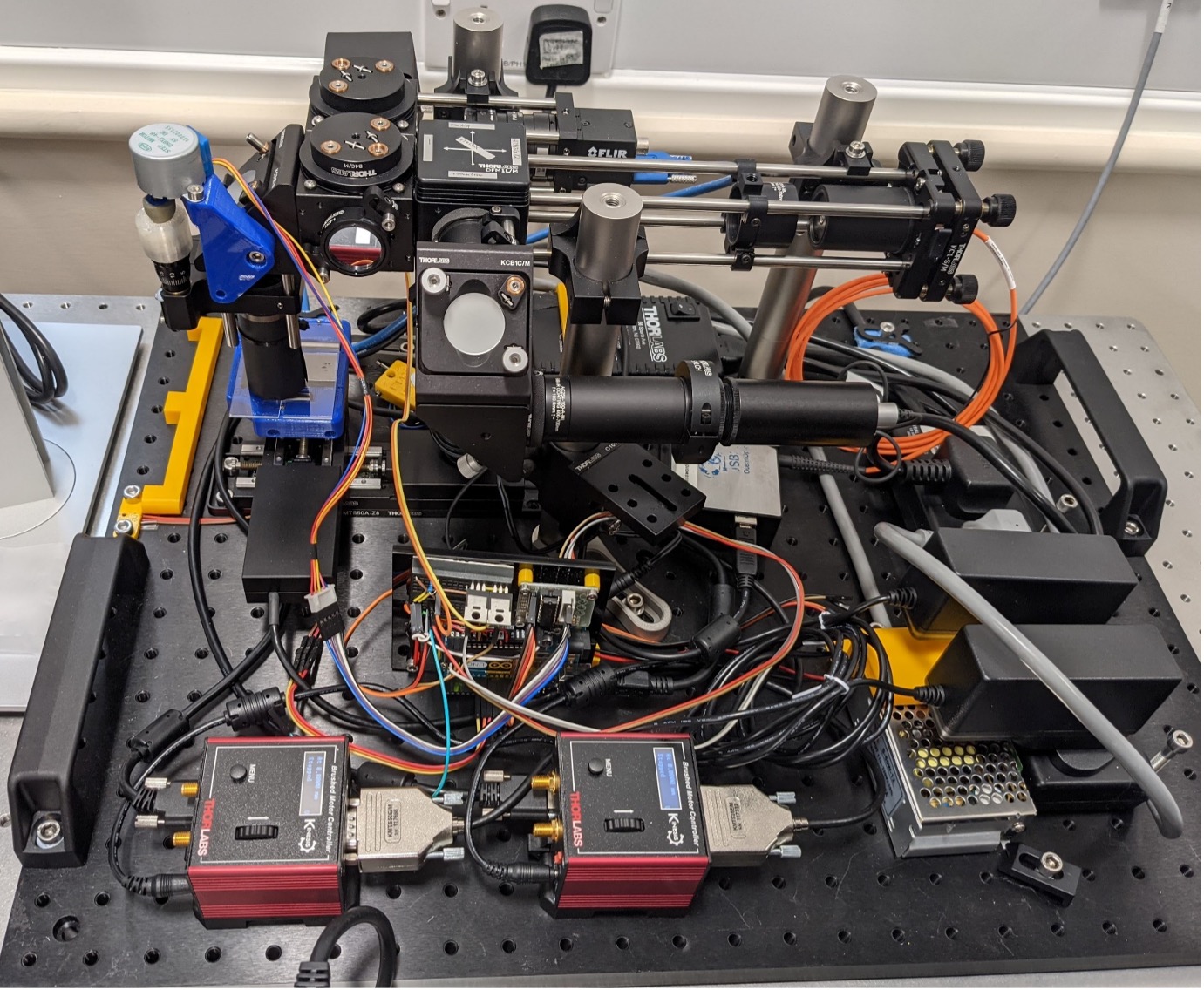MKID microscopes
Fluorescence microscopy is an incredibly versatile and widely used tool to understand small scale systems such as cells, and MKIDs are of interest as a detector for these instruments because they have several characteristics of interest. A common limitation is often detector noise, which is overcome with a higher signal (i.e. more sample illumination, or longer exposure) which can perturb the sample or cause photo bleaching or photo toxicity. MKIDs overcome this because they have no detector noise, and capture individual photons, meaning much lower light levels can be used. Given their spectral sensitivity, it is also possible to image several fluorophores simultaneously, when a monochrome detector would require multiple exposures using different filters. Because MKIDs have time resolution, it opens up possibilities for temporal studies such as fluorescence lifetime imaging, or simply how a cell reacts to a stimulus. The wide spectral sensitivity means that systems which would previously have required multiple cameras and dichroic, can be much simpler and so more optically efficient. This system could be used to make observations that are otherwise impossible to achieve with existing detector technology.



/prod01/prodbucket01/media/durham-university/departments-/physics/cfai/CfAI-Webpage-Banner-smaller.jpg)